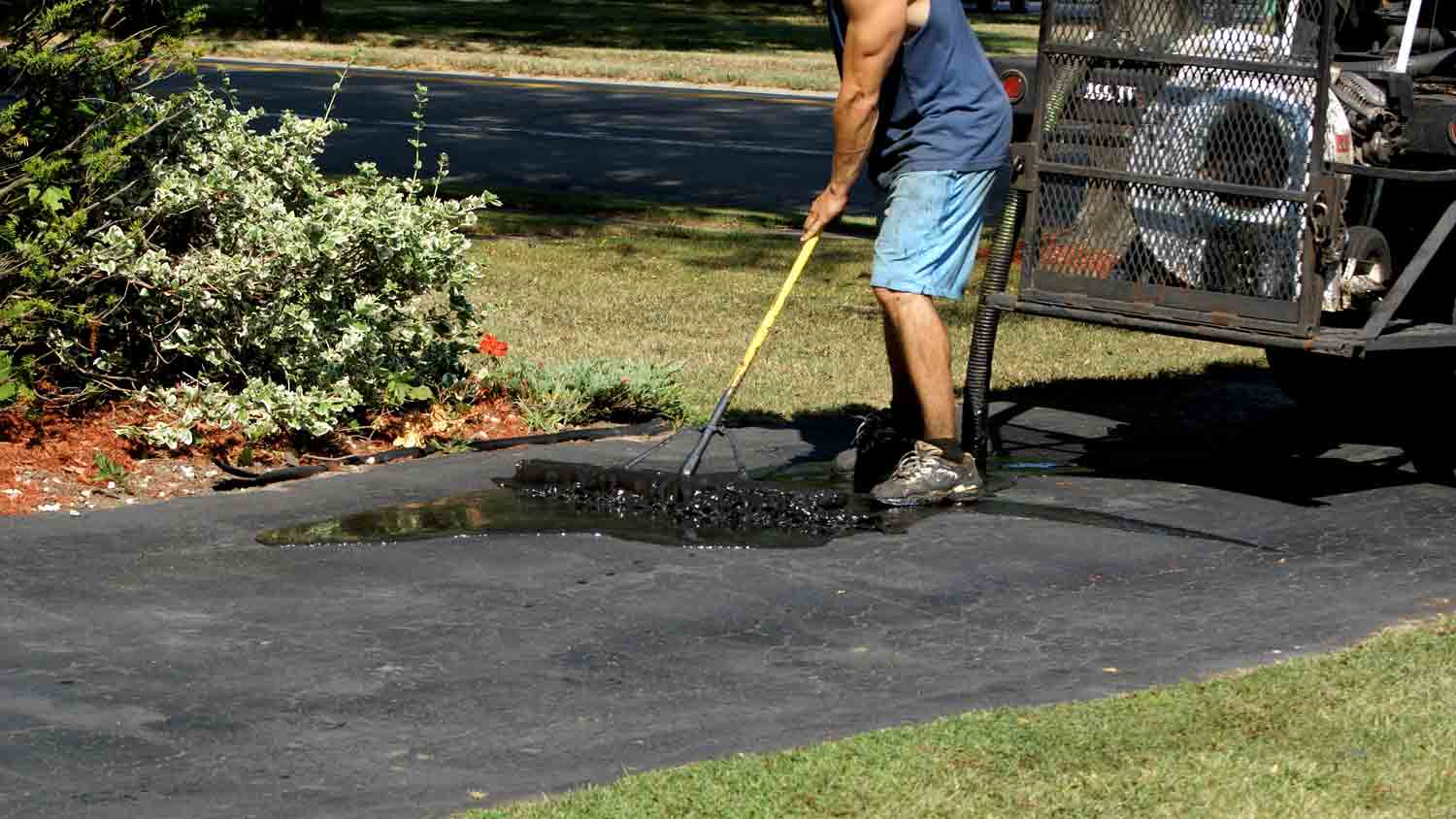
The cost to build a road on your property can be high, but the utility is often worth it. Use this cost guide to see how much this project will cost.


The area’s square footage and desired depth determine how much asphalt you need.
Most residential paving projects require between 0.5 and 10 cubic yards of asphalt.
An asphalt paving pro can help you determine the exact amount.
Asphalt is a common material for paving roads, driveways, parking lots, patios, and walkways. It’s durable and can last many years, so it’s used in many different ways. If you’re planning a paving project and wondering, “How much asphalt do I need?” this guide will help you calculate your material needs to create a solid project budget.
Asphalt is measured in cubic yards, and the amount you need depends on the size of the area to be paved as well as your desired depth. The thicker the asphalt, the more durable the surface, and the less you’ll likely pay in asphalt driveway repair costs over time. Here are some examples of common asphalt projects and the amount of asphalt needed for each.
| Type of Project | Average Size in Square Feet | Cubic Yards of Asphalt (2-Inch Depth) | Cubic Yards of Asphalt (4-Inch Depth) |
|---|---|---|---|
| Driveway | 200–800 | 1.23–4.9 | 2.5–9.9 |
| Patio | 50–350 | 0.3–2.2 | 0.6–4.3 |
| Walking Path | 80–280 | 0.5–1.7 | 1–3.5 |
Before determining how much asphalt you need, measure the area where the asphalt will be poured. Then, use the following equations to calculate the correct amount of asphalt.
(Length x width) x depth = total cubic feet
Cubic feet ÷ 17 = total cubic yards of asphalt needed
It’s advisable to order about 5% to 10% more asphalt than you think you need to account for wastage.
Once you know how to calculate your asphalt needs, it’s time to get measuring. Asphalt driveways typically measure between 200 and 800 square feet. To measure your driveway, follow these steps.
Measure the total length of the driveway in feet
Measure the total width of the driveway in feet
Multiply the length by the width to get the total square footage of the driveway
Multiply the square footage by the number of inches (converted to feet) to get the total cubic footage of asphalt needed
Divide by 27 to get the number of cubic yards needed
For example, a driveway that measures 10 feet by 20 feet would equal 200 square feet. If you wanted a 4-inch-thick driveway, you would multiply 200 by 0.33, which is 4 inches converted to feet for a total area of 66.7 cubic yards. Then, you’d divide that number by 27 to get a total of 2.5 cubic yards of asphalt.
If the area for asphalt installation is circular, follow these steps to measure the area for paving.
To find the outer radius, measure the distance from the circle's center to the outer edge.
Multiply the radius by itself.
To determine the square footage of the area, multiply the result by pi (3.14).
Follow the above steps to reach the cubic yards of asphalt needed for the circular area.
The process of measuring an asphalt patio or walking path is the same as measuring a driveway. However, patios and paths are generally smaller than driveways.

Asphalt installation generally isn’t a DIY-friendly project unless you have prior experience pouring and installing the material. In most cases, hiring an asphalt paving contractor is the best option. To find the right pro for your job, compare quotes from several companies to see which one best suits your budget. Also consider experience, former customer reviews, and recommendations from friends or family members when hiring a local driveway paving company.
From average costs to expert advice, get all the answers you need to get your job done.

The cost to build a road on your property can be high, but the utility is often worth it. Use this cost guide to see how much this project will cost.

Is your driveway totaled? The price of repaving your driveway can save you from repair and resurfacing costs that are no longer worth the investment.

The cost of a tar and chip driveway falls between gravel and asphalt. Is this unique process the happy medium you've been looking for? Let's take a look.

Everything you need to know about the pros and cons of having a decomposed granite driveway at your home based on price, life span, and performance.

Learn to remove stubborn oil stains from asphalt driveway using simple household items like baking soda, powdered detergent, or floor degreaser.

Learn how to choose the best driveway sealer based on driveway type, longevity, and cost.